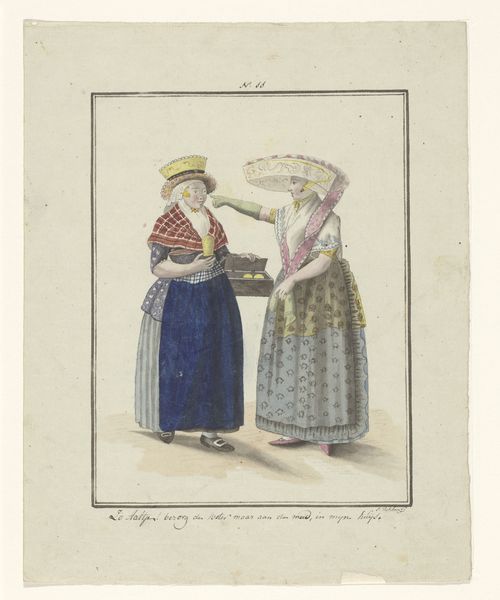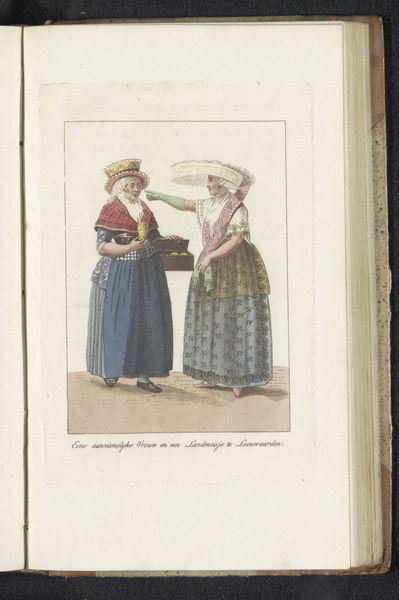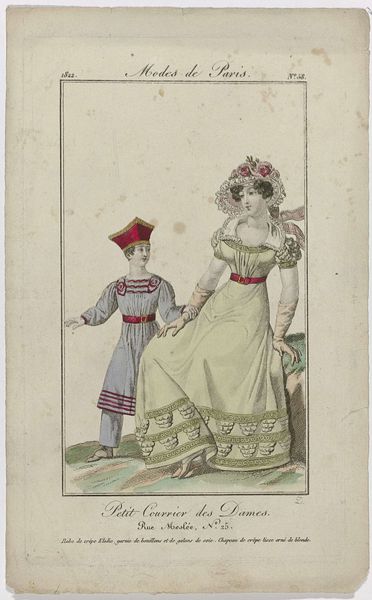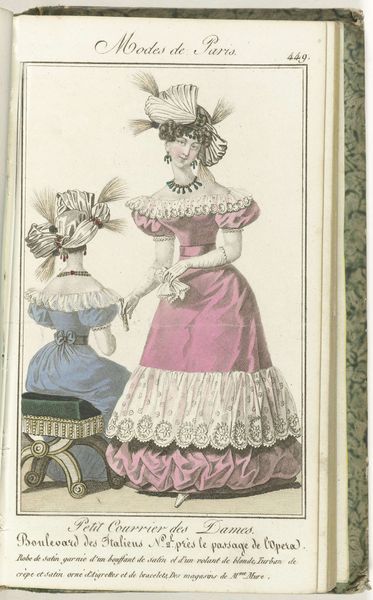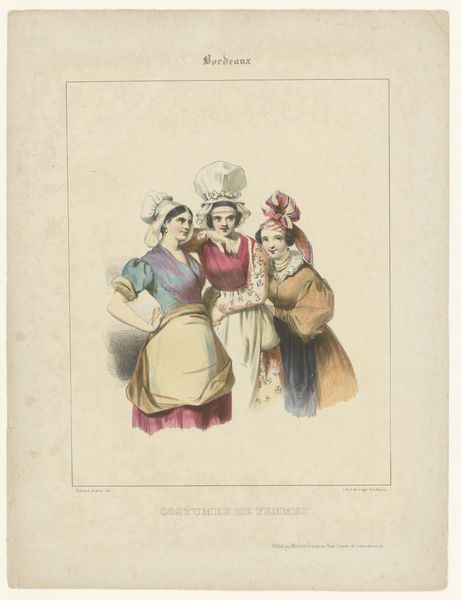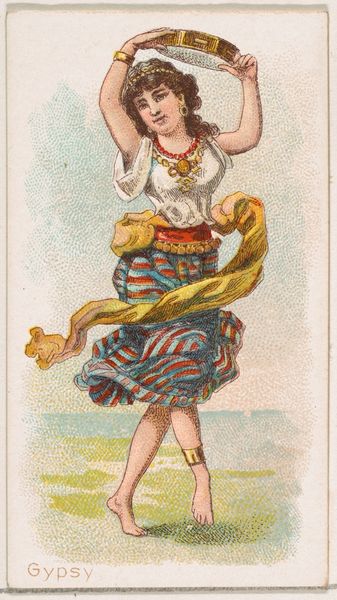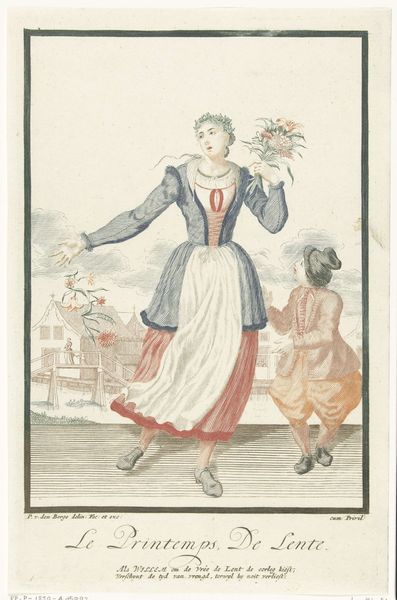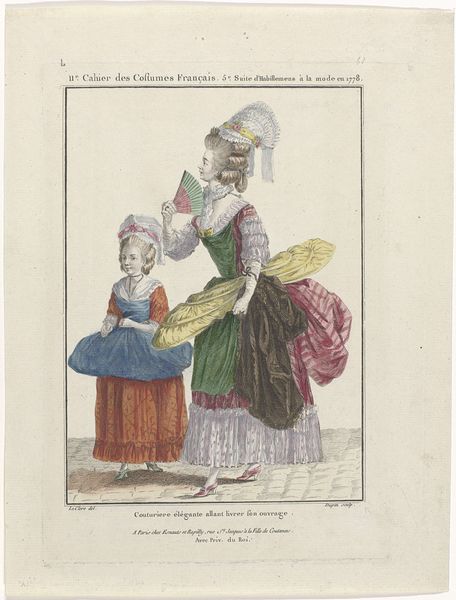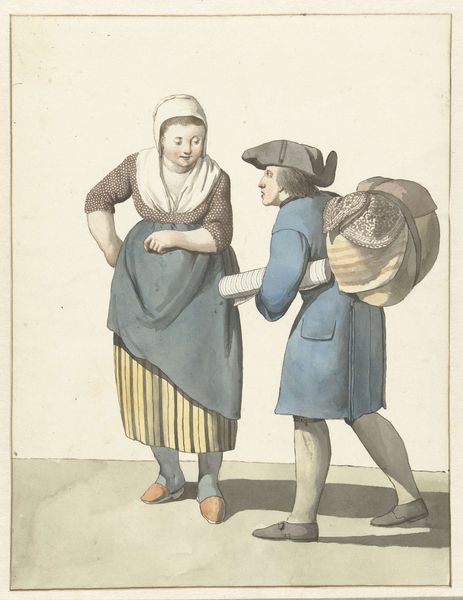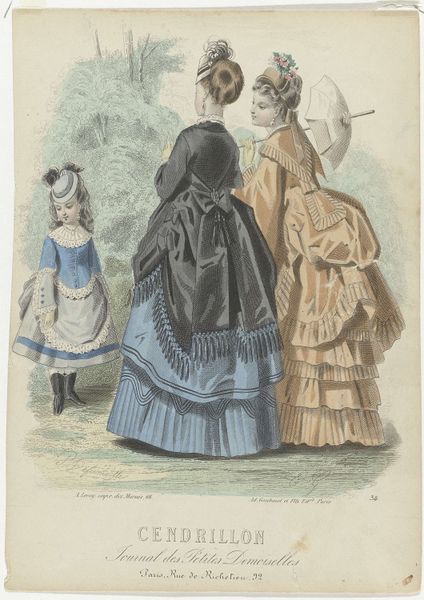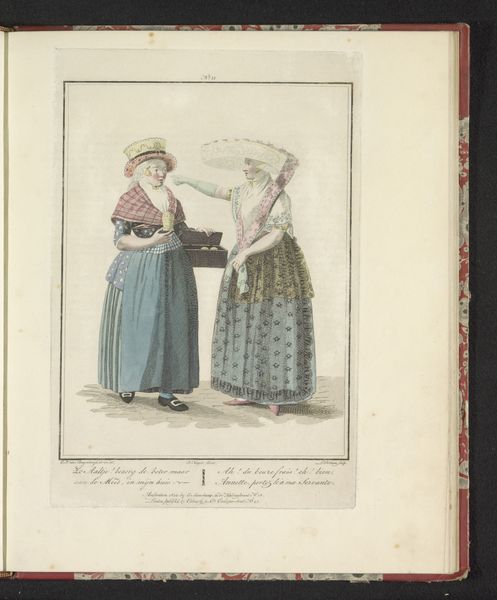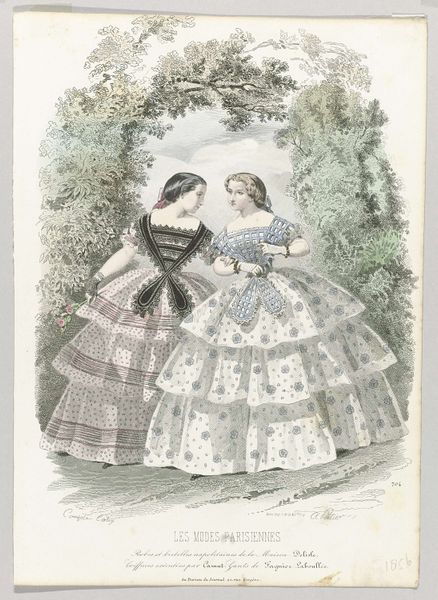
drawing, paper, watercolor
#
portrait
#
drawing
#
paper
#
watercolor
#
folk-art
#
watercolour illustration
#
genre-painting
Dimensions: height 177 mm, width 132 mm
Copyright: Rijks Museum: Open Domain
Curator: What immediately strikes me is the intimate domesticity—the scene feels familiar and self-contained. Editor: Indeed. Let’s take a closer look at this watercolor drawing held here at the Rijksmuseum. The artwork titled "Two Children from North Holland" is attributed to Willem van Senus, made sometime between 1816 and 1825. It captures, quite simply, two young girls in their regional attire. Curator: The puppet show element adds a dimension of childhood fantasy; you sense they're performing or re-enacting something significant to them, possibly some familiar folklore. What about you? Anything jump out at you? Editor: It’s intriguing how Van Senus chose to depict them, right? The emphasis isn't on idealizing beauty, as you often find in portraiture, but rather on recording details about their clothing, accessories, and, essentially, their cultural identity within the region. The girls become representatives. Curator: Absolutely. The clothes themselves function as symbolic markers—a visual language denoting regional identity. Even the muted color palette has a feeling of lived history. You know, there’s an interesting dynamic here; one offers something to the other, almost a secret exchange. Editor: Consider also how representations of children during this era often served a didactic purpose. These weren't simply sentimental depictions, but reminders of regional heritage during a period of immense socio-political shifts. Think of the Netherlands shifting from Napoleonic rule toward establishing its own kingdom during the time. Curator: The doll itself—a sort of mini-person within the drawing—speaks volumes about play, imitation, and the transmission of culture between generations. This object holds immense significance. Editor: Ultimately, what fascinates me is what this tells us about how the Dutch understood themselves at that particular historical moment through these images—in recording those ordinary moments and details. Curator: The quiet charm of this simple scene invites reflection on timeless themes: the spirit of play, childhood friendships, the enduring power of symbols. Editor: An excellent thought; an invitation to appreciate the rich narratives woven into our seemingly straightforward historical images.
Comments
No comments
Be the first to comment and join the conversation on the ultimate creative platform.
